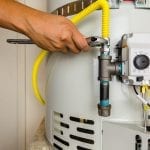We've encountered this article pertaining to How to Maintain a Hot Water Heater in a Few Simple Steps down the page on the net and accepted it made good sense to relate it with you on this page.

Hot water is necessary for daily comfort, whether it's for a refreshing shower or washing meals. To guarantee your hot water system runs successfully and lasts much longer, routine maintenance is vital. This post offers practical ideas and insights on exactly how to maintain your home's warm water system to prevent disruptions and costly fixings.
Intro
Maintaining your home's warm water system might appear difficult, yet with a couple of basic actions, you can guarantee it operates efficiently for many years to come. This overview covers whatever from understanding your warm water system to DIY upkeep suggestions and knowing when to call expert help.
Relevance of Preserving Your Hot Water System
Routine maintenance not only prolongs the lifespan of your hot water system but also ensures it operates efficiently. Ignoring upkeep can result in decreased effectiveness, higher power bills, and also premature failing of the system.
Signs Your Warm Water System Needs Upkeep
Knowing when your warm water system needs focus can prevent significant issues. Keep an eye out for signs such as irregular water temperature, weird noises from the heating system, or rusty water.
Purging the Water Heater
Purging your hot water heater removes sediment accumulation, boosting efficiency and extending its life.
Monitoring and Changing Anode Rods
Anode rods prevent rust inside the container. Inspecting and replacing them when worn is vital.
Facility Concerns Calling For Professional Help
Examples consist of major leaks, electric issues, or if your hot water heater is regularly underperforming.
Regular Expert Maintenance Benefits
Professional upkeep can include extensive examinations, tune-ups, and guaranteeing conformity with safety requirements.
Inspecting and Adjusting Temperature Level Settings
Changing the temperature level settings makes sure optimal performance and safety and security.
DIY Tips for Upkeep
You can execute several upkeep jobs yourself to maintain your warm water system in top problem.
Looking for Leaks
Frequently check pipelines and links for leaks, as these can lead to water damages and higher bills.
Understanding Your Hot Water System
Before diving right into upkeep tasks, it's valuable to comprehend the standard components of your hot water system. Normally, this includes the hot water heater itself, pipelines, anode poles, and temperature controls.
Regular Monthly Upkeep Tasks
Normal monthly checks can help capture minor issues before they rise.
Examining Stress Alleviation Valves
Evaluating the pressure relief valve guarantees it operates correctly and prevents excessive pressure buildup.
Insulating Pipes
Shielding warm water pipelines minimizes warm loss and can save power.
When to Call a Specialist
While do it yourself maintenance is beneficial, some concerns need expert proficiency.
Verdict
Routine maintenance of your home's warm water system is vital for efficiency, long life, and expense savings. By adhering to these ideas and recognizing when to look for specialist aid, you can make certain a trusted supply of warm water without unanticipated disturbances.
How to Maintain an Instant Hot Water Heater
Before tinkering with your hot water heater, make sure that it’s not powered on. You also have to turn off the main circuit breaker and shut off the main gas line to prevent accidents. Also turn off the water valves connected to your unit to prevent water from flowing into and out of the appliance. 2. When you’re done, you have to detach the purge valves’ caps. These look like the letter “T†and are situated on either side of the water valves. Doing so will release any pressure that has accumulated inside the valves while at the same time avoid hot water from shooting out and burning your skin. 3. When the purge valves’ caps are removed, you have to connect your hosing lines to the valves. Your unit should have come with three hoses but if it didn’t, you can purchase these things from any hardware or home repair shops. You can also get them from retail stores that sell water heating systems. Read the user’s manual and follow it to complete this task properly. When the hosing lines are connected, open the purge port’s valves. 4. You should never use harsh chemical cleaners or solutions when cleaning your unit. Make use of white vinegar instead. It should be undiluted and you’ll probably use about 2 gallons. 5. Now flush your water heater. This task should probably take about 40 minutes. We can’t give you specific directions for this because the procedure is carried out depending on the type, model and brand of your heater. With that being said, refer to the user’s manual. 6. When you’re done draining the unit, you have to turn off the purge port valves again. Remove the hosing lines that you earlier installed on each of the water valves. Put the valve caps (purge port) back in their respective places and be very careful so as not to damage the rubber discs that are found inside these caps. 7. Now that everything’s back in place, check your user’s manual again to find out how to reactivate your water heating system. 8. Once it is working, turn one of your hot water faucets on just to let air pass through the heater’s water supply pipes. Leave the tap on until water flows smoothly out of it. https://www.orrplumbing.com/blog/2014/september/how-to-maintain-an-instant-hot-water-heater/

I stumbled upon that entry on Water Heater Maintenance Tips You Can't Afford to Forget while browsing the internet. Enjoyed reading our write up? Please share it. Help others find it. I value your readership.
Source